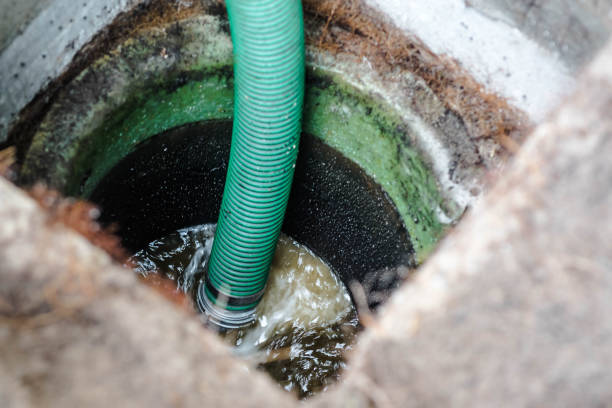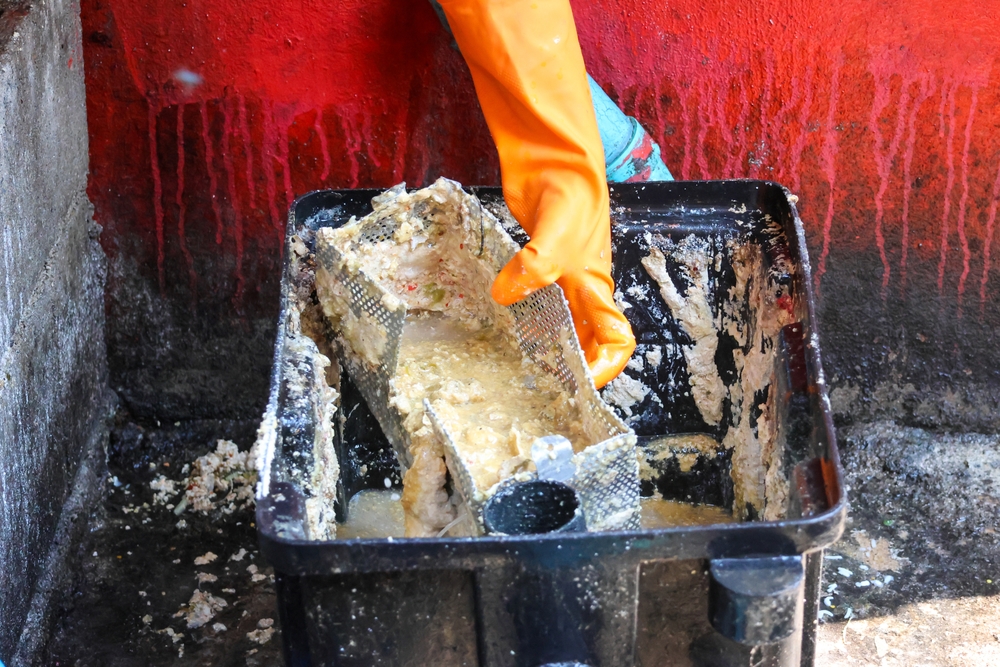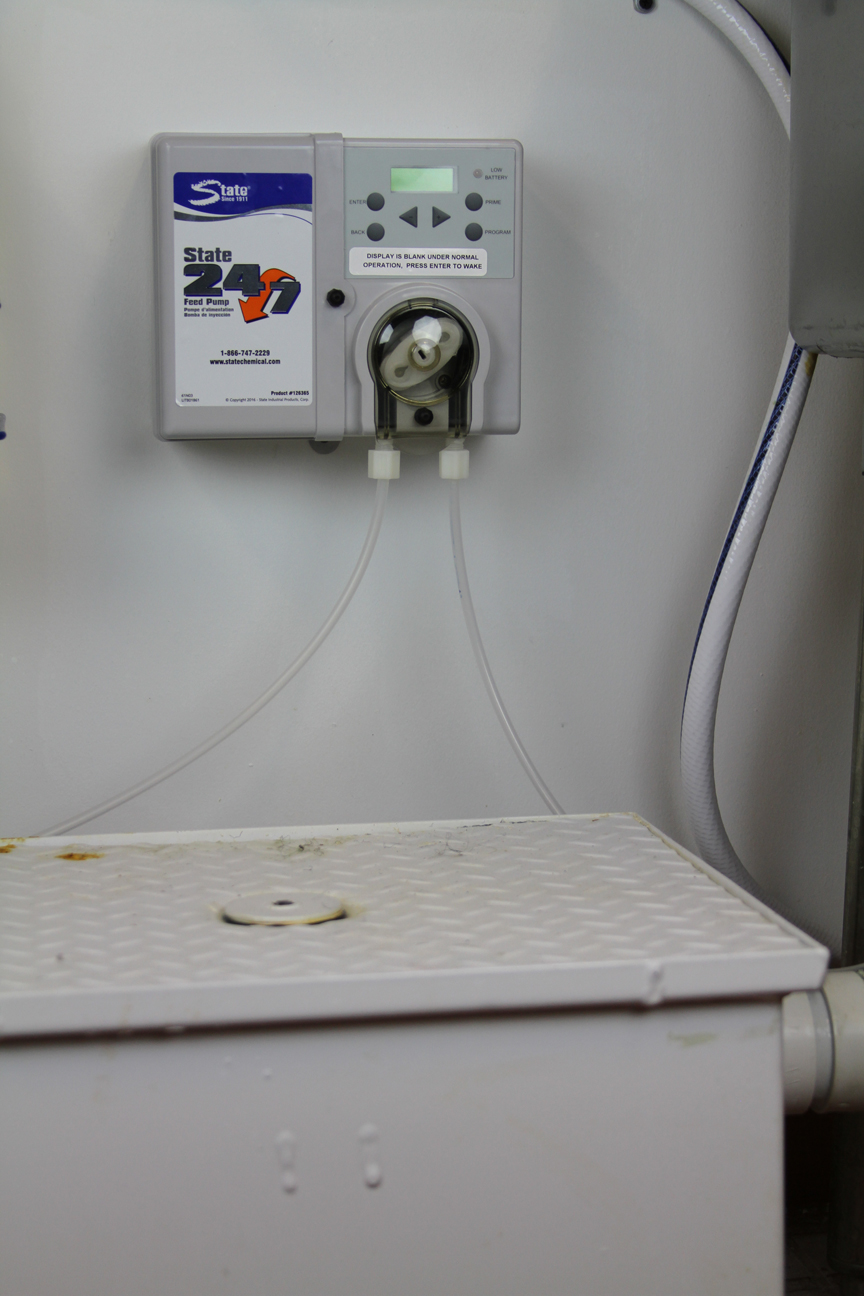Grease Trap Pumping Cost vs. Grease Trap Maintenance Cost
Grease Trap Pumping Cost vs. Grease Trap Maintenance Cost
Consistently pumping a grease trap can cause quite a headache. After all, it’s a chore you can’t avoid—a costly one that can lead to drain backups and overflows if skipped. Grease trap pump-outs cannot be completely prevented, but fortunately, with grease trap maintenance chemicals, they can be significantly reduced. However, this begs the question: is there really a cost savings when you use chemical grease trap maintenance?
At State Chemical, we manufacture and distribute chemical solutions for various applications, including grease trap maintenance. We know how frustrating frequently pumping a grease trap can be, but cost is always at the forefront of your mind, and full-picture pricing isn’t always clear.
To help you determine whether grease trap maintenance chemicals are for you, we will explain a grease trap’s purpose, why it must be pumped out, how much pump-outs cost, and how much chemicals cost. After reading, you’ll understand the price difference between frequent pump-outs and chemicals, and you’ll know whether chemicals are right for you.
What is a Grease Trap?
A grease trap collects fats, oils, and grease (FOGs) in commercial kitchens. By doing so, the grease trap prevents FOGs from going down the drain and entering the city’s sewer system. This is especially important in high-FOG environments, like restaurants where FOGs will enter the drain in some capacity no matter how hard you try to prevent it. For this reason, most cities require commercial kitchens to have a grease trap to prevent FOG clogs in the sewer system.
A grease trap works by separating FOGs from wastewater. Naturally, oil and water separate, so when both gather in a grease trap, the FOGs float to the top, any solids sink to the bottom, and the water occupies the middle. The grease trap uses this science to drain water only from the middle of the trap, maintaining water flow while also preventing FOGs from entering the pipes. Instead, FOGs remain “trapped” until they are later pumped out.
Why is Pumping a Grease Trap Necessary?
All grease traps must be pumped out. During a grease trap pumping, a professional uses specialized equipment to remove all FOGs from the grease trap. Then, they dispose of them at a designated facility. From there, your grease trap has a fresh start to begin the cycle again.
However, adding maintenance chemicals to the grease trap can reduce the frequency of pump-outs. Suppose that you currently don’t use chemical maintenance for your grease trap, so you pump out once a month. If you were to add chemical maintenance to your grease trap, you might be able to reduce the frequency of grease trap pump-outs to once every three months.
This is because maintenance chemicals work to break down the FOGs in your grease trap either through bacterial digestion or emulsification. Therefore, FOG buildup is reduced before it can become a problem, giving you more time before it gets bad enough to require a pump-out.
How Much Does Grease Trap Pumping Cost?
The price of pumping a grease trap varies greatly depending on the size of your grease trap, how well-maintained it is, and how accessible it is. Generally, you can expect it to cost around $115–$475 to pump out a regularly serviced indoor grease trap and $325–$1,040 to pump out a regularly serviced outdoor grease interceptor. However, you can sometimes expect it to cost as much as three times the price if the grease trap isn’t regularly maintained.
It’s the most expensive to pump out a large outdoor grease trap that hasn’t been regularly maintained because that service takes significantly more time than, say, a small indoor grease trap that’s been well maintained. Where the former job would take hours, the latter could take as few as twenty minutes.
How Much Do Grease Trap Maintenance Chemicals Cost?
So, how does the cost of maintenance chemicals measure up to the cost of grease trap pump-outs?
We cannot speak to costs from other chemical providers, but a grease trap maintenance program with State Chemical costs $150–$400 per month. This cost depends largely on the severity of the FOG buildup in your grease trap. If FOG levels are higher, more potent chemicals must be used and those chemicals must be used at higher concentrations than if there is less grease in the grease trap. Overall, this means that the pricing can vary significantly depending on the situation.
Let’s say you have a well-maintained outdoor grease trap, are not using chemical maintenance, and need to pump the grease trap monthly. In this situation, you’re spending $3,900–$12,480 on grease trap maintenance each year.
Now, the average price for grease trap maintenance chemicals is $140–$400 per month ($1,680–$4,800 per year). If you began using these chemicals, you would only need to pump your grease trap every three months, reducing your pumping cost to about $1,300–$4,160 per year. The chemicals and the less frequent pump-outs would make your grease trap maintenance cost a total of $2,980–$8,960 per year.
So, to recap, in this situation, monthly pump-outs are costing you $3,900–$12,480. But with chemicals and less frequent pump-outs, you would only be spending $2,980–$8,960 per year. This makes for a median cost savings of $2,220 per year when you use chemical grease trap maintenance.
Learn About How State Chemical’s Line Bac’R Can Treat Your Grease Trap
Grease trap pump-outs are unavoidable, but their frequency can be reduced. Now that you know how chemical grease trap maintenance can reduce pump-outs and save you money, watch the video below to learn how State Chemical’s Line Bac’R can help treat your grease trap.


.png)










